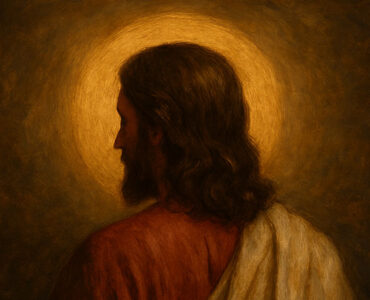Christianity, with its rich history spanning over two millennia, is not a single, monolithic entity. Instead, it’s a vibrant tapestry woven from countless threads of traditions, interpretations, and expressions of faith.
Within this vast landscape, various sects or denominations have emerged, each holding unique perspectives on doctrine, organization, and perhaps most visibly, worship practices.
This article aims to explore the diverse ways Christians gather to honor God, helping you understand the varied rituals, hymns, and traditions that define worship across different Christian groups.
This journey of understanding can deepen your appreciation for the breadth of Christian faith, and we encourage you to explore more about God’s plan for salvation through resources like the Peidayesh website.
What Does Worship Mean in Christianity?
At its core, worship in Christianity is an act of attributing honor, reverence, and devotion to God. It’s about acknowledging God’s greatness, His power, His love, and His sovereignty.
The Bible provides a foundation for this understanding. John 4:24 tells us, “God is Spirit, and those who worship Him must worship in spirit and truth.” This verse emphasizes that true worship isn’t just about external actions, but about an inward posture of the heart, aligning with God’s nature and His revealed truth.
Worship can take many forms, from personal prayer and meditation to communal gatherings. It’s an expression of gratitude, praise, adoration, and submission.
As Romans 12:1 says, “Therefore, I urge you, brothers and sisters, given God’s mercy, to offer your bodies as a living sacrifice, holy and pleasing to God, this is your true and proper worship.” This scripture highlights that our entire lives can be an act of worship, not just the time spent in a church building.
Read More: Divorce in Christianity: Jesus Christ’s Message
The Diversity of Christian Worship Practices
While the core purpose of worship remains consistent, the methods and styles employed by different Christian denominations vary significantly. These variations often stem from historical developments, theological interpretations, and cultural influences. Let’s look at some common differences.
Liturgical Worship: Tradition and Order
Many older Christian denominations, such as Roman Catholicism, Eastern Orthodoxy, and various Protestant traditions like Anglicanism and Lutheranism, follow structured, liturgical forms of worship.
Sacraments and Rituals
In these traditions, sacraments play a central role. The Roman Catholic and Eastern Orthodox churches typically recognize seven sacraments, including Baptism, Eucharist (Communion), Confirmation, and Marriage. These are seen as outward signs of inward grace, divinely instituted channels through which God communicates His blessings.
- Eucharist/Communion: This is often the centerpiece of liturgical worship. In Catholic Mass, for instance, the bread and wine are believed to become the actual body and blood of Christ (transubstantiation). Other denominations might view it symbolically or as a real, spiritual presence of Christ. The act of sharing in Communion is a direct command from Jesus himself (Luke 22:19: “And he took bread, gave thanks and broke it, and gave it to them, saying, ‘This is my body given for you; do this in remembrance of me.'”).

Structured Services
Liturgical services follow a defined order, often including:
- Set prayers and responses: Congregations actively participate through rehearsed prayers and affirmations.
- Scripture readings: Passages from the Old and New Testaments are read systematically. As 2 Timothy 3:16 reminds us, “All Scripture is God-breathed and is useful for teaching, rebuking, correcting and training in righteousness.”
- Sermons/Homilies: A message delivered by a priest or pastor based on the scripture readings.
- Hymns and Chants: Traditional music, often with deep theological meaning, is sung.
- Symbolism and Aesthetics: Churches are often adorned with intricate artwork, stained glass, and altars, designed to draw the worshiper’s mind towards the divine. Incense, vestments, and specific postures (kneeling, standing) are also common.
Non-Liturgical Worship: Simplicity and Spontaneity
In contrast, many Protestant denominations, particularly those stemming from the Reformation and later movements like Baptists, Methodists, and Pentecostals, tend to adopt more non-liturgical or free-form worship styles.
Emphasis on Preaching and Scripture
These services often prioritize the sermon as the central element, aiming to explain and apply biblical truths to daily life. The direct teaching of God’s Word is considered paramount. Acts 2:42 describes the early church, stating they “devoted themselves to the apostles’ teaching and fellowship, to the breaking of bread and prayer.”
Music and Praise
While hymns are still common, contemporary worship music, often with more modern instruments and lyrical styles, is widely used. The focus is on engaging the congregation in active praise and adoration. Psalm 100:2 encourages us: “Worship the LORD with gladness; come before Him with joyful songs.”
Less Formal Structure
Services might be less rigid, allowing for more spontaneous prayer, testimonies, and expressions of personal faith. The atmosphere can be more informal and community-focused. The design of the church building may also be simpler, with less emphasis on ornate decorations.
Charismatic and Pentecostal Worship: Spirit and Expression
Pentecostal and Charismatic churches represent a distinct expression of Christian worship, characterized by a strong emphasis on the Holy Spirit and spiritual gifts.
Open Expressions of Praise
Worship in these settings is often highly expressive, incorporating:
- Raised hands: A physical posture of surrender and adoration (Psalm 63:4: “I will praise you as long as I live, lifting my hands to you in prayer.”).
- Dancing: As a joyful expression of praise.
- Speaking in tongues: Believed to be a spiritual language given by the Holy Spirit (Acts 2:4).
- Prophecy: Messages believed to be directly from God, delivered through individuals.
- Healing prayer: A focus on divine healing through prayer and faith.
Spontaneity and Emotion
These services are generally less structured than liturgical services, allowing for more spontaneity and emotional expression. The goal is often to create an environment where individuals can deeply experience God’s presence. While the forms may differ, the desire to connect with God’s Spirit is universal among believers.
Read More: Is Inter-Faith Marriage Permitted by the Bible?
Common Threads: The Core of Christian Worship
Despite the vast differences in worship practices, a foundational unity exists across Christian denominations. The central object of worship is always God, the Father, the Son, and the Holy Spirit. All true Christian worship ultimately points to Jesus Christ, who is the very heart of the Christian faith.

Jesus Christ: The Only Way to Salvation
It is crucial to remember that regardless of the worship style or denominational background, Jesus Christ, the Son of God, is the only way to our salvation. He is the bridge between a holy God and sinful humanity.
As Jesus himself declares in John 14:6, “I am the way and the truth and the life. No one comes to the Father except through me.” There is no other name under heaven by which we can be saved (Acts 4:12).
His death on the cross paid the penalty for our sins, and His resurrection conquered death, offering eternal life to all who believe in Him. This central truth unites all genuine Christian believers, regardless of their specific worship practices. Our worship, in whatever form it takes, should ultimately glorify Him and acknowledge His supreme sacrifice and lordship.
Read More: Fasting: Protestant, Orthodox, Catholic Views
Finding Your Place in Worship
Understanding the many ways Christians worship helps you appreciate the faith’s rich heritage. It may help you find a community where you feel close to God. Some prefer the quiet beauty of liturgical services. Others enjoy direct teaching in non-liturgical churches or the energy of charismatic praise.
But all forms share one goal: to worship God in spirit and truth. If you are exploring faith or want to know God better, you’re invited to learn more. The Peidayesh website offers helpful resources for building a real relationship with the living God. Through Jesus Christ, you can experience true salvation and lasting hope.
May your journey of worship lead you to joy, discovery, and a deeper connection with the One who deserves all praise.
FAQ
The central focus of worship in all Christian denominations is faith in Jesus Christ as the Son of God, the Savior, and Lord.
Catholics emphasize tradition, elaborate rituals, and the use of icons, while Protestants focus on the Word of God (preaching) and a personal relationship with God.
Worship means to show value and respect for God and to have a heartfelt relationship with Him, which is manifested through obedience, prayer, and praise.









Add comment